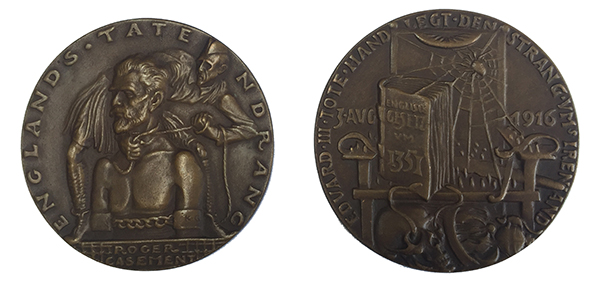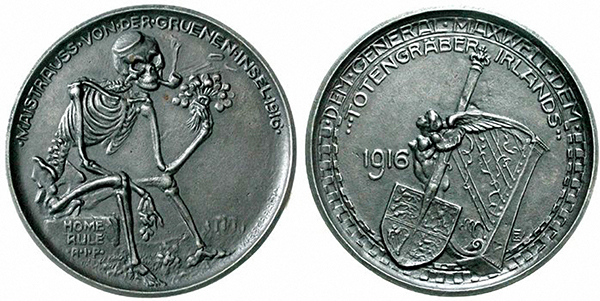A COMMEMORATIVE MEDAL BY KARL GOETZ, 1916
Published in Artefacts, Issue 5 (September/October 2016), Volume 24By Ian Lawler
Karl Goetz was a German satirical medallist based in Munich who is best known for the infamous Lusitania medal which, owing to an incorrect date for the sinking (two days prior to the actual event), was seized upon by the Allies as evidence that the torpedoing of the Lusitania was a planned and calculated act. The original medal was copied and sold as a propaganda souvenir in tens of thousands, with an accompanying leaflet highlighting the barbarism of the Germans.
What is less well known is his prolific output of over 80 satirical medals during the First World War, commenting on acts of the enemy or applauding the deeds of the German armed forces. The pieces were produced rapidly while the events were fresh in the minds of the populace, great numbers of whom purchased the medals and carried them in their pockets to show to one another. Many were in dubious taste, reflecting the raw emotion circulating in Germany during a time of war. Other medallists also produced satirical medals during the war but Goetz was by far the most prolific. The medals are frequently referred to by a catalogue or ‘K’ number ascribed by Gunther Kienast, who wrote a comprehensive text cataloguing all of Goetz’s output. The Casement medal is K-180.
The ‘Execution of Roger Casement’ is a rather more straightforward commentary, however, caustically referencing the 1351 treason law used to convict and execute Casement and the English oppression of Ireland.
On the obverse one can see a Highlander, placing a rope around the shackled Sir Roger Casement’s neck. In the border is the inscription Englands Tatendrang (‘England’s desire to act’). Goetz’s initials, KG, can be found on the left shackle.

Above: Karl Goetz’s ‘Execution of Roger Casement’.
On the reverse of the medal a more complex and intricate scene is used to convey Goetz’s message, with a spider spinning its web around a Great Charter inscribed English Gesetz vm. 1351 (‘English law of 1351’) and surrounded by implements of torture. Across the shield is the date of Casement’s execution, 3. Aug. 1916. In the border is the inscription Eduard III tote Hand legt den Strang urns Ireland (‘Edward the Third’s dead hand puts the rope around Ireland’). ‘English law of 1351’ refers to the treason law of Edward III used to convict Casement. The medal was produced in blackened cast iron and bronze (shown here).
Other German medallists produced pieces commenting on Irish issues, most notably Walter Eberbach, who cast a particularly gruesome series of medals called Totendanz (‘Dance of Death’). One of these bemoaned the death of Irish Home Rule, the obverse of which depicted a skeleton smoking a pipe sitting on a gravestone inscribed ‘Home Rule RIP’ while holding a posy of shamrock. The reverse shows a shovel with the Irish coat of arms thrust through an Irish harp, with the inscription General Maxwell Totengräber Irlands (‘General Maxwell, Ireland’s Gravedigger’). More information on the medals of Karl Goetz can be found at www.karlgoetz.com, an extremely comprehensive website.

Above: Walter Eberbach’s ‘Home Rule RIP’.
Ian Lawler is Fisheries Development Manager with Bórd Iascaigh Mhara.
















